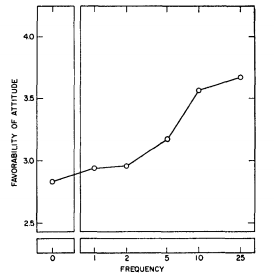With
so many adverts taking over the screen, how can one grab your attention among
the rest? And with so many advertisements promoting similar types of products, how
can one stand out amidst the competition?
The
advert above, featuring the famous Cheryl Cole has been created to promote the
L’oreal True Match Foundation. It talks about what the product does, its unique
properties and why you should buy it. You’re probably thinking that description
is pretty generic for advertising product. So what makes this one different
from the rest? Repetition! The word ‘match’ or some suffix of the word appears
seven times in 30 seconds. Surely, hearing the same word again and again would
not make you want to buy the product, but somehow it seems to work and women in
130 different countries use L’Oreal foundation on a day-to-day basis.
Zajonc
(1968) looked into the idea of repetition and its effects on our attitudes and
perception. He came up with the ‘mere exposure effect’ and stated that the more
we are exposed to something, the more of a preference we develop for it, and
this recurring stimulus increases familiarity and in turn likeability. This
means that we are more likely to have a positive attitude towards a product
without even trying it.
In
one of his experiments, he found higher favourability ratings for words that
were shown more frequently. However, to establish causality he carried out a three-part
experiment and used a range of different stimuli, including nonsense symbols,
nonsense Chinese symbols and photographs of faces to see whether the same
results were obtained. The conditions were counterbalanced to prevent the
problem of order effects. As Figures 1 and 2 show, it was found that the more
frequently a symbol or photograph was shown, the more likely people linked them
to positive meanings.
Figure
1: Average rates affective connotation of nonsense words and Chinese-like
characters as a function of frequency of exposure
Cacioppo
and Petty (1979) also found the mere exposure effect to be true, whereby
participants presented with an argument frequently were more likely to agree
with it. This means that an increase in exposure leads to a change in
behaviour.
Figure 3: The effects of pre-exposure
position and message repetition on agreement and cognitive response.
As you
can see from Figure 3, the mere exposure effect is an effective behaviour
change technique is getting people to alter their attitudes. In the example of
the L’Oreal advert, the simple idea of including the same word a number of
times gets people associating it positively: as a result, they develop a preference
for it without even realising. However, advertisers need to be careful not to
fall into the trap of overexposure, which may in fact result in the opposite
effect. Figure 3 shows just that, whereby seeing the message more than three
times actually leads to a decrease in agreement and favourability.
References
Cacioppo, J. T.,
& Petty, R. E. (1979). Effects of message repetition and position on
cognitive
response, recall, and persuasion. Journal of personality and Social
Psychology, 37(1), 97.
Zajonc, R. B.
(1968). Attitudinal effects of mere exposure. Journal of personality
and
social psychology, 9(2p2),
1.




No comments:
Post a Comment
Note: Only a member of this blog may post a comment.